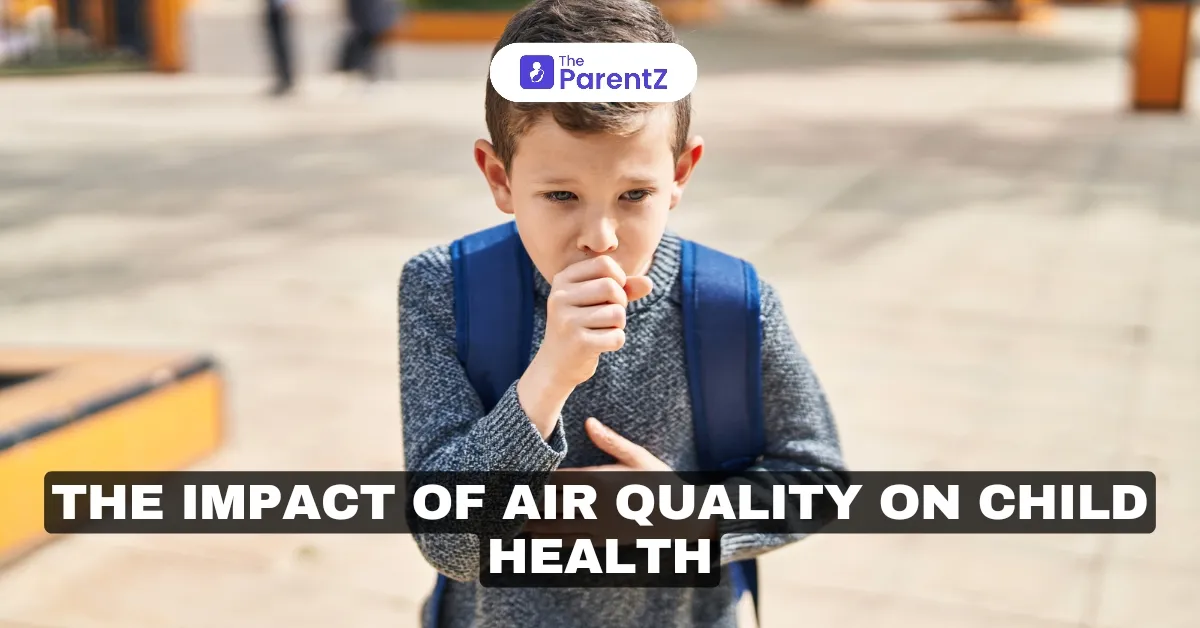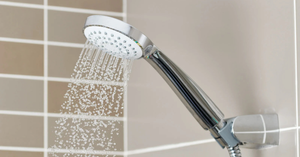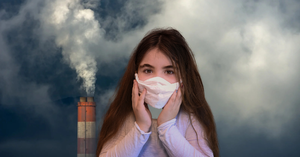Air quality has become a growing concern in recent years, especially in urban areas where pollution levels are on the rise. Children are particularly vulnerable to the harmful effects of poor air quality due to their developing respiratory systems and higher breathing rates compared to adults. Exposure to air pollution can have both immediate and long-term consequences for children’s health, making it essential for parents and caregivers to take steps to protect them. This article examines how air quality impacts child health and what measures can be taken to reduce exposure to harmful pollutants.
How Air Quality Affects Children’s Health
The harmful effects of air pollution on children’s health are well-documented. Pollutants such as ozone, particulate matter, and nitrogen dioxide can damage lung tissue and impede respiratory function.
- Respiratory issues: Children exposed to high levels of air pollution are more likely to develop asthma, allergies, and respiratory infections. Their airways are smaller and more susceptible to irritation, making them more prone to conditions like bronchitis and pneumonia.
- Long-term effects: Continuous exposure to polluted air can affect lung development, leading to reduced lung function later in life. Studies have also suggested that air pollution may have cognitive impacts, potentially contributing to developmental delays or decreased attention spans.
- Indoor vs. outdoor air quality: Many people assume that poor air quality is primarily an outdoor problem, but indoor air pollution can be just as harmful. Dust, mold, pet dander, and chemical emissions from household products can all contribute to poor indoor air quality, especially in homes with inadequate ventilation.
Air Pollution Sources and Common Pollutants
Understanding the sources of air pollution is crucial for mitigating its impact on children’s health. Common pollutants can come from both outdoor and indoor environments.
- Outdoor air pollutants: Urban areas tend to have higher concentrations of outdoor air pollutants, such as smog, industrial emissions, and vehicle exhaust. These pollutants are particularly harmful because they can linger in the atmosphere, especially during periods of high heat and humidity.
- Indoor air pollutants: Indoor air quality can be compromised by common household pollutants such as tobacco smoke, mold, dust mites, and volatile organic compounds (VOCs) found in cleaning products and building materials. Ensuring good ventilation and reducing the use of harmful chemicals indoors is critical for maintaining a healthy living environment.
- Identifying pollution sources: Parents and caregivers should be aware of both outdoor and indoor pollution sources and take steps to limit exposure. For example, avoiding outdoor activities during high pollution periods and keeping homes well-ventilated can help reduce the risk to children.
Health Risks and Vulnerable Populations
Certain children are at higher risk of experiencing health problems due to poor air quality.
- Children with pre-existing conditions: Those with asthma, allergies, or other respiratory conditions are particularly vulnerable to air pollution. Even short-term exposure to pollutants can trigger symptoms or lead to complications.
- Urban vs. rural disparities: Children living in urban areas tend to be exposed to higher levels of air pollution than those in rural environments. However, rural areas are not immune—pesticides, fertilizers, and other agricultural chemicals can also degrade air quality.
- Socioeconomic factors: Families with limited access to healthcare or living in lower-income neighborhoods may experience greater exposure to pollution due to factors such as proximity to industrial areas, traffic, or poor housing conditions.
Steps to Improve Air Quality for Children
While we cannot control all sources of air pollution, there are steps parents and caregivers can take to protect children from harmful exposure.
- Improve indoor air quality: Keep homes well-ventilated by opening windows and using exhaust fans in areas like the kitchen and bathroom. Consider using air purifiers with HEPA filters to remove airborne particles. Regularly clean and dust living spaces, and avoid smoking indoors to prevent the buildup of indoor pollutants.
- Limit outdoor exposure during high pollution periods: Check local air quality reports, especially during seasons when pollution is highest (e.g., summer smog or winter haze). On days with poor air quality, limit outdoor activities and keep windows closed to prevent outdoor pollutants from entering the home.
- Advocacy for cleaner policies: On a broader scale, communities can advocate for policies that reduce air pollution, such as stricter emissions standards for vehicles and industries, or investments in public transportation and clean energy sources.
Conclusion
Air quality has a significant impact on children’s health, affecting their respiratory system, cognitive development, and overall well-being. Parents and caregivers must be proactive in minimizing their child’s exposure to harmful pollutants, both indoors and outdoors. By improving air quality at home and advocating for cleaner environmental policies, we can protect children’s health and ensure a brighter, healthier future.








Be the first one to comment on this story.